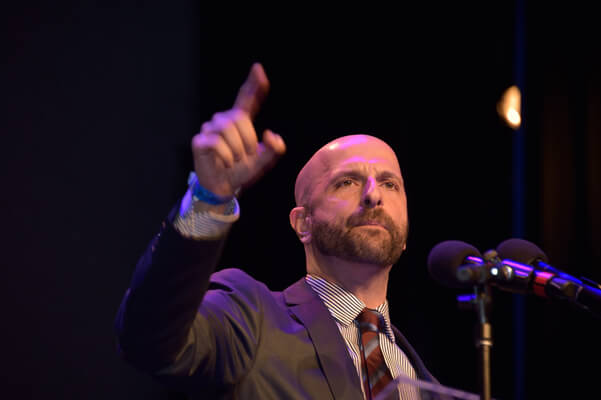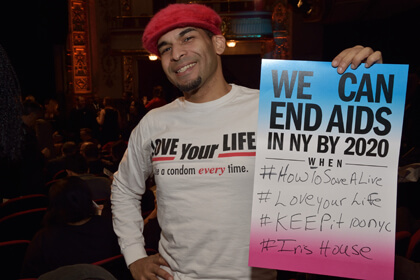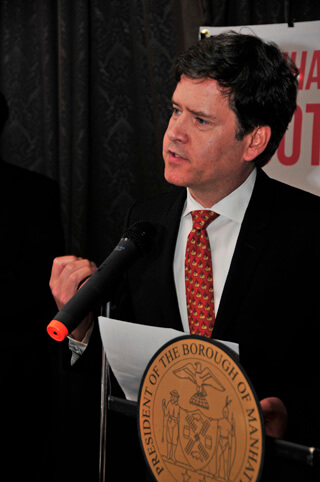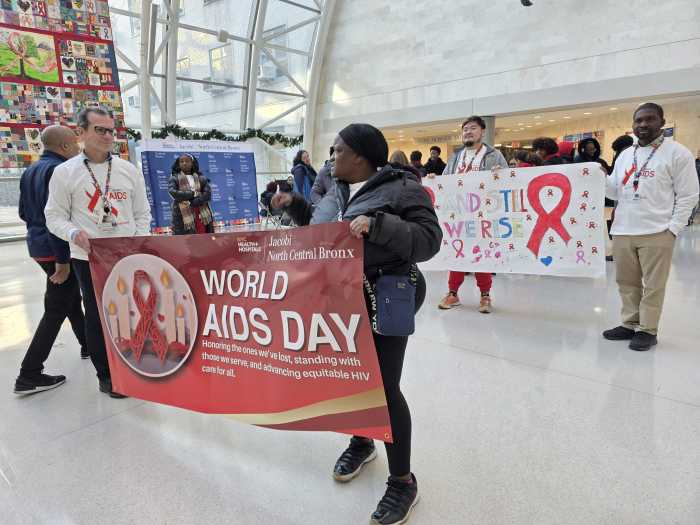BY ED SIKOV | Gavin Grimm sat quietly in the audience last November as dozens of parents at a school board meeting in Gloucester County, Va., demanded that he be barred from using the boys’ restrooms at school. They discussed the transgender boy’s genitals, expressed concern that he might expose himself and cautioned that being in a men’s room would make the teenager vulnerable to rape. One person called him a ‘freak.’ When Gavin, 16, got his turn at the podium, he was remarkably composed. ‘I didn’t ask to be this way,’ Gavin said. ‘All I want to do is be a normal child and use the restroom in peace.’”
This is the remarkably sane and sensitive opening to the New York Times lead editorial in support of Grimm and his legal challenge to the local school board, which has refused to let him use the boys’ room at school. As the editorial notes, Grimm’s fellow students were initially “supportive or unfazed” when he used the boys’ room for seven weeks last fall. When parents got wind of it, all hell broke loose — the parents having far dirtier minds than their adolescent children.
Grimm’s federal case, which was brought with support from the American Civil Liberties Union, is moving forward despite the judge dismissing Grimm’s claim that the school board violated Title IX, which outlaws discrimination based on sex at schools that receive federal funding. As the surprisingly thoughtful BuzzFeed News reports, “The announcement was unexpected not only because it diverges from the recent legal trend on the question of whether sex discrimination bans include anti-transgender discrimination, but also because a lawyer for the US Department of Justice who had come to argue in Grimm’s favor on the Title IX question had not yet been given a chance to speak.”
The Times has run an astounding seven pro-trans editorials over the past three months, including Fiona Dawson’s beautiful “op-doc” (a short documentary video that makes no effort to present more than one point of view on the topic at hand), “Transgender, At War and In Love,” which profiles a military couple, both of whom are trans. The muscular airman, Logan Ireland, is one damn hot piece of, um, eye candy. When the shirtless Ireland starts flexing for the camera, the Times op-ed section suddenly turns more erotic than most Falcon videos.
For old-timers like me (I’m 58 — Methuselah territory in gay years), the Times support of LGBT issues — marriage equality and transgender rights in particular — is truly mind blowing. It was not always thus. This aging elephant never forgets.
Until 1987, A. M. Rosenthal, the Times executive editor from 1977 to 1988, prohibited the use of the word “gay” unless it appeared in the name of an organization or part of an attributed quote. Rosenthal didn't think that stories about gay men and lesbians were appropriate for the Times, or of any interest to its readers.
This idiocy led directly to the Times’ inadequate and morally indefensible coverage — I use the term loosely — of the AIDS epidemic.
Compare the Times reporting on AIDS with its treatment of Legionnaire’s disease. In 1976, 221 attendees at an American Legion convention in Philadelphia contracted a severe bacterial infection; 29 of them died. In two months, the Times ran 62 stories about Legionnaire’s disease, 11 began on the front page. In the first 19 months of the AIDS epidemic, the Times ran a grand total of seven stories about it. By the time AIDS reached its 11th front-page story mark in the Times, there were more than 12,000 AIDS cases and over 6,000 deaths.
According to the Institute for Health Policy Studies at the University of California in San Francisco, between June 1982 and June 1985, the San Francisco Chronicle ran 442 staff-
written AIDS stories, 67 made the front page. During the same period, the Times ran a little over half that number (226), only seven of which made the front page.
In March 1986, the Times saw fit to publish an op-ed piece by William F. Buckley in which Buckley proposed that the United States government tattoo everyone who was HIV-positive at the presumed site of the initial infection in order to identify them to prospective sex or IV drug-using partners. Gay men would get tattoos on our asses, drug users would be permanently marked on their arms. Buckley — not to mention whoever approved the editorial for publication — was utterly oblivious to the proposal’s parallel with Nazis tattooing Jews, Roma, and Soviet prisoners of war in concentration camps. He was said to be quite shocked when the New York Native called his proposal “Buckley’s Buchenwald.” The comparison simply hadn’t occurred to him, or to the Times editors, either.
On the editorial page, Times readers were treated to such gems as “Don’t Panic, Yet, Over AIDS” in 1986 and “Why Make AIDS Worse Than It Is” in 1989. The former, with its ominous “Yet” bracketed by commas, suggested that because only expendable gay men and IV-drug users were dying, there was no need — yet — to worry. If that situation changed, if the Times’ strictly heterosexual and non-drug-using “we” started getting sick, then it would be time for justifiable panic. The latter contained this horrifyingly matter-of-fact observation: “In certain major groups, [new infections] seem to be leveling off. If so, the epidemic will peak, and maybe sooner than many forecasters expect. The reason is that the disease is still very largely confined to specific risk groups. Once all susceptible members are infected, the numbers of new victims will decline.” In other words, once all the faggots and junkies get sick and die, there won’t be any more of them left to become infected, so the numbers will drop off. And that would be a Good Thing.
AIDS coverage in the '80s, when the Times did provide it, was often simple regurgitations of press releases or bullet points from medical conferences. So-called news stories by such prose masters as Lawrence K. Altman and Philip M. Boffey were exemplary in their bovine complacency. And the paper’s editors stubbornly refused to treat AIDS as a political or societal story. It was strictly a medical issue with a periodic human-interest tale thrown in for comic relief.
Do I sound bitter? I certainly hope so. I’m thrilled that the Times has been such a steadfast supporter of marriage equality and trans rights. But for those in my age cohort, the paper has a lot of past failures to atone for.
(Special thanks to Ron Goldberg, who supplied much of the data contained in this column.)




































